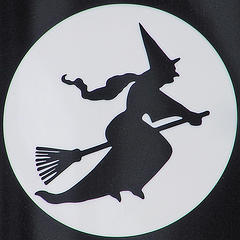
I read a very interesting article on Pankhearst about historical and modern witchcraft trials and the connection with popular fiction.
“Today, it seems very popular for writers – specifically women – to write supernatural claptrap about the magical descendants of the victims of Salem, or about witches who survived, without giving even a moment’s thought to the fact that they are, in fact, condoning the institutionalized torture and murder of – predominantly – women and, figuratively speaking, pissing all over the graces [sic] of tens of thousands of innocent women.”
Horrific events in fiction are markedly different from the same things in real life. Indeed, they are often required for the story to be interesting (murder mysteries, war stories, etc.).
This also makes me think of a dichotomy in my own community: many of us cruising sailors enjoy pirate themed events. We say “Yaar,” dress up in tricornered hats, and drink our jiggers of rum. However, we also deal with real piracy personally – I met a family who were later taken hostage in the Indian Ocean and I’m only one degree removed from the crew of Quest who were murdered after being kidnapped by pirates.
Part of the reason for this apparent conflict is that the “fun” pirates are an entirely different thing from the real ones – they are fiction. People need to be able to explore the dark side of our personalities, and fiction is a good way of doing that. If we say that some events are “off-limits” to fiction, even to fiction which treats those events as fodders for humour, then we are repressing the exploration of those ideas.
All that being said, I wonder how many people who enjoy “supernatural claptrap about the magical descendants of the victims of Salem” are aware of the history behind these stories. I’d like to think that reading stories based on real events would help spur people to learn a little about those events.
It’s an interesting question for writers and other creative artists about where (if anywhere) to draw the line.

I remember when the Teenage Mutant Ninja Turtles first hit the mainstream. Some art nerds I knew decried the bastardization of the names, claiming that anyone who did that in a mere ‘comic book’ wasn’t deserving of the title ‘artist.’
The Metropolitan Museum of Art hung huge banners from their front entrance reading simply “Leonardo, Donatello, Michelangelo and Raphael”
I imagine that 0.01% of the boys who were into the Turtles ever cracked a book about renaissance art… but that still would have been thousands who didn’t otherwise.
The real persecution of so-called “witches” was horrible, and there is value in remembering just how horrible it was. But saying that anyone who touches on the history of witch trials for entertainment purposes, without going into depth on the horribleness of it all, is “condoning” it? That’s just self-righteous posturing.